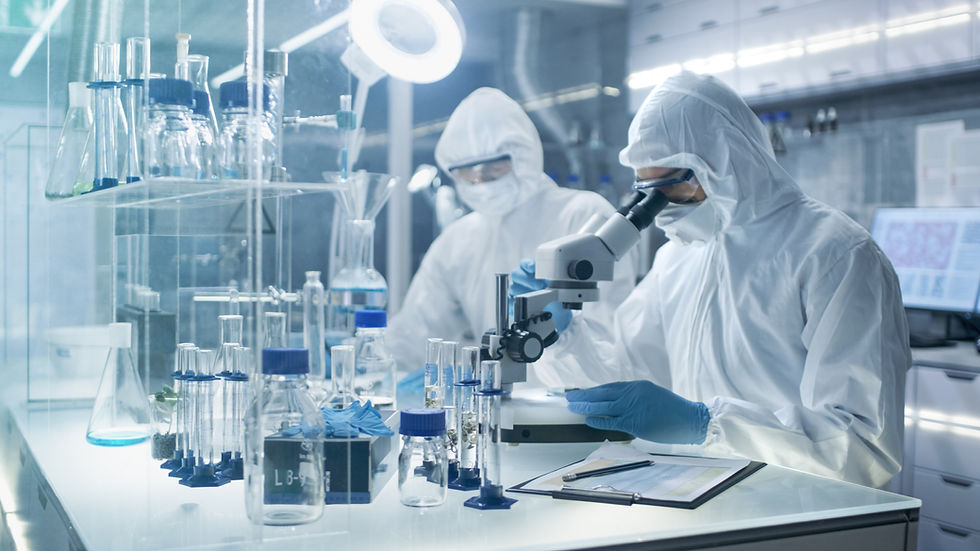8 Types of Water Recognized by the FDA
- Joe Winslow
- Aug 16, 2018
- 3 min read

You probably already know that water in the biopharma industry is used as an excipient, for testing both raw materials and finished products, and for cleaning. However, it might surprise you to find out that there are exactly 8 types of water for pharmaceutical use recognized by the FDA. It might surprise you even more that DI water isn’t one of them. Nor are the types 1, 2, and 3 water found in laboratories.
There are 4 types of water that are of concern to most pharmaceutical and biotech companies, and four more that are really “finished products” that are manufactured to be sold by the companies that make them. The four more common types are: non-potable; potable; USP purified; and Water for Injection (WFI). The four product type waters are USP sterile WFI, USP sterile water for Inhalation, USP Bacteriostatic WFI, and USP sterile water for irrigation. For this discussion, we will just talk about the former list.
Non-potable water is just what you might think it is. Water that does not meet the EPA standard for drinking water. Potable water is drinking water. It does not require regular testing if you get it from a source that controls it to EPA standards like all municipalities in the US. For an inspection, you should be able to show documentation that your local water source does meet those EPA standards. This can come from documented testing that is performed by the municipality or from your own testing. You may not know that potable water can be used in the manufacture of drug substances (also known as Active Pharmaceutical Ingredients or API’s), but not finished drug products.
USP purified water or Water for Injection must be used when manufacturing a drug product. USP purified water is used in oral solid dosage forms that will be ingested by the patient as well as liquids, creams, and ointments that are generally applied to the skin. WFI is used for sterile dosage forms that are intended, as the name implies, to be injected. The specifications and testing protocols for these types of water are found in the Unites States Pharmacopeia (USP).
WFI can only be manufactured in the US by reverse osmosis OR distillation, and ONLY by distillation for products sold in the EU. This may change in the not so distant future, as the EU is in the process of revising Annex 1 and the revision as it is currently written allows other methods for producing WFI.
Methods for producing purified water used in biopharmaceutical products is a subject that cannot be explained or understood completely in a short article such as this. While a solid understanding of the regulatory requirements for water is essential in the biopharma business, understanding all of the technical methods of producing the various types of water is best left to the experts in the industry. Even among those studying this for their entire career, there are disagreements as to the best methods for producing purified water. This is further complicated by the fact that depending on the starting water specifications, the treatment methods will vary depending on the various impurities that may be found in water.
Common impurities can be grouped into 4 categories; inorganic ions, organics, particles, bacteria, and endotoxin.
Particulates are small particles such as silt and sand that can be visible to the naked eye as well as sub-micron suspended matter (colloids).
Inorganics are minerals that dissolve in water to form positive and negative ions, including sodium chloride, hardness ions such as calcium and magnesium, and dissolved carbon dioxide.
Organics are chemical contaminants containing carbon that can be naturally occurring (i.e., from decay of vegetation) or man-made (i.e., industrial chemicals, detergents, and pesticides).
Microorganisms include algae, bacteria, viruses, and by-products of bacteria (endotoxins).
Here are some of the common purification process steps and their relative effectiveness at removing impurities.

So, what is De-Ionized water? De-ionization is a pre-treatment process ahead of further purification steps. Deionization is achieved by running potable water through either tanks (called beds) of positively and negatively charged media, or an electro-deionization unit which is comprised of electrically charged plates to remove ions. DI Water is often used in initial equipment rinsing because it lacks ions (as the name suggests) and as such, is a very efficient rinsing medium for detergents which are full of ions. It is also commonly used in glassware washers in laboratories. Using DI as feed water can also help prolong the life of more expensive downstream treatment equipment like RO membranes, heat exchangers, and distillation units. Although DI Water is not one of the types of pharmaceutical water recognized by FDA, it does not mean it is not important or won’t be inspected when they are in your plant.
To learn more, take a look at the FDA’s Inspection Technical Guide: Water for Pharmaceutical Use





Comments